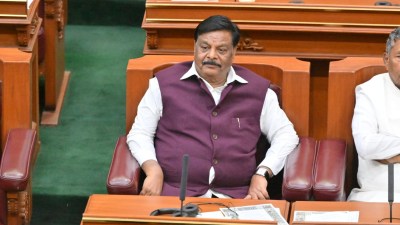On October 9, the Congress launched a Dalit Gaurav Samvad initiative across Uttar Pradesh. The one-and-a-half month Dalit outreach programme, timed with the death anniversary of BSP founder Kanshi Ram, seeks to spread his ideology.

This is striking as the BSP has been instrumental in wiping out the Congress from UP, weaning away the Dalits – an integral part of the grand old party’s post-Independence electoral formula of upper castes, Muslims and Dalits in north India. Kanshi Ram, who died in 2006, in a stinging comment in Chamcha Age in 1982, attacked Dalits who did business with the Congress.
Earlier this year, the Samajwadi Party, whose key Yadav vote bank is considered a rival of the Dalits in the state, marked Kanshi Ram’s birth anniversary on March 15 at the party headquarters.
Significantly, while the Congress has reversed its traditional line to embrace the demand for a caste census, and also backed proportionate reservation, it seems to have chosen to fete its once bete noire Kanshi Ram rather than Jagjivan Ram, the tallest Dalit leader from the party. The latter sought an integrative politics that chimed with the centrist ideology of the Congress, while the former charted a path of autonomous Dalit politics that steered clear of the Congress, and was hostile to it.
In neighbouring Bihar, the Janata Dal (United) of Nitish Kumar has sent out teams of party workers and leaders for ‘Karpoori Charchas (discussions on Karpoori Thakur)’ across Bihar. Thakur as chief minister of Bihar in 1977 had implemented the Mungeri Lal Commission report, to provide separate quotas for extremely backward and backward classes, thus sub-categorising the Backward classes. Earlier, he was the Deputy CM of Bihar in 1967, and the CM for a short while around 1970.
Choosing Thakur, a Nayee, is a nuanced move for Kumar, whose recently commissioned Bihar caste survey has shown that the Extremely Backward Classes (EBCs) comprise 36% of the population in the state (the largest group). Significantly, B P Mandal, the chairman of the second Backward Class Commission appointed in 1979, recommended a single OBC quota at the Centre in his 1980 report. Thus, the legacies of Mandal and Thakur, though similar in many ways, diverge in this crucial aspect – whose relevance is expected to increase in times to come.
Story continues below this ad
On the one hand, Nitish’s move tries to distinguish a constituency he has carved out as CM from the Muslim-Yadav vote bank of his ally the RJD; on the other, it also tries to safeguard the constituency from inroads being made by the BJP in recent years. Significantly, many questions on the veracity of the Bihar caste survey have been made by EBC and Dalit politicians, many of them close to the BJP.
In the last few days, yet another spectacle was the sight of SP chief Akhilesh Yadav scaling the wall of the Jai Prakash Narayan International Centre in Lucknow on October 9, to pay floral tributes to the leader on his birth anniversary, after being denied permission to enter the premises by the police.
JP, as he was called, is known for two things: being the underground hero of the Quit India Movement of 1942, after the arrest of the top leadership; and returning in 1974 two decades after renouncing politics, to lead an Opposition movement against Indira Gandhi. In between, the socialist-turned-Gandhian was involved mostly in social causes.
What is often glossed over while discussing the JP Movement – that saw the socialists, the breakaway Congress-O, the Bharatiya Lok Dal and the Jana Sangh, closing ranks against the Congress – is that it heralded the rise of a young OBC leadership in north India. Names like Lalu Prasad and Nitish rose from the movement. In his dramatic attempt to claim JP’s legacy, Akhilesh was claiming the legacy of that OBC surge under the umbrella of anti-Congressism in north India. Moreover, since JP remains a national icon like few others – with his popularity cutting across castes – Akhilesh was also positioning himself before a larger audience beyond his core constituency.































